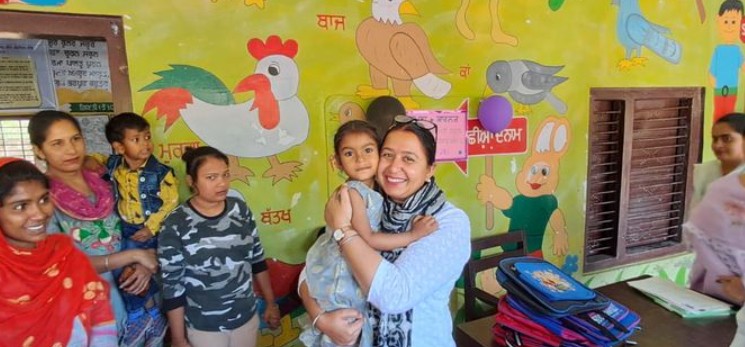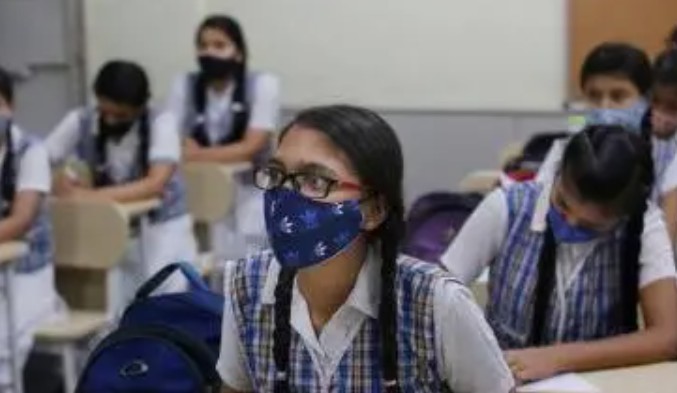Teachers across Punjab are facing increasing pressure to meet student enrollment targets set by the education department. However, many educators are reluctant to push aggressively for admissions due to heightened scrutiny and fears of punitive action if they fail to meet expectations. The tension between government directives and on-the-ground challenges in schools has created a stressful environment for teachers, who are struggling to balance their instructional duties with enrollment campaigns.
The education department has been running extensive enrollment drives across the state to bring more children into the formal education system. These efforts are part of broader government initiatives to improve literacy rates and ensure that every child receives quality education. However, the drive has become a source of frustration for many teachers, who feel burdened with additional responsibilities that go beyond their primary role of teaching. Schools are expected to increase student numbers significantly, with teachers being held accountable for meeting targets.
Several educators have raised concerns that they are being unfairly blamed when enrollment numbers do not meet expectations. The pressure has intensified as authorities have started monitoring enrollment statistics more closely, issuing warnings to schools that fall short of their goals. Teachers argue that while increasing school enrollment is a noble objective, the current approach places excessive responsibility on them without addressing systemic issues such as a lack of infrastructure, poor resources, and declining interest in government schools.
One of the biggest challenges teachers face is convincing parents to enroll their children in government schools, particularly when private institutions offer better facilities and perceived higher-quality education. Many families prefer private schools despite higher fees, believing that their children will receive superior instruction and have better prospects for future employment. This preference has made it difficult for teachers to persuade parents to opt for government schools, where issues like overcrowded classrooms, insufficient staff, and outdated teaching materials persist.

The scrutiny surrounding enrollment campaigns has led to significant stress among educators. Many teachers report being called for meetings with education officers, where they are questioned about their school’s performance and expected to justify low enrollment figures. Some teachers claim they have been reprimanded or threatened with transfers if their schools fail to meet the prescribed targets. This fear of administrative action has made many educators hesitant to engage in enrollment drives, as they worry about the consequences of not achieving set goals.
The problem is further exacerbated by the lack of adequate support from the education department. Teachers have pointed out that while they are expected to bring in more students, there is little effort to improve the conditions of government schools. Many institutions lack basic amenities such as clean drinking water, functional toilets, and sufficient teaching staff. In rural areas, the situation is even worse, with schools struggling to attract students due to their remote locations and poor facilities.
Additionally, teachers argue that the enrollment drive does not take into account the realities of declining birth rates and migration patterns. Many families are moving to urban centers or other states in search of better opportunities, leading to naturally lower student populations in some areas. Despite these demographic shifts, authorities continue to impose rigid enrollment targets, disregarding the challenges faced by teachers on the ground.
Another major concern is the increasing administrative workload placed on teachers. Apart from their teaching responsibilities, educators are now expected to conduct door-to-door visits, convince parents to enroll their children, and maintain detailed records of enrollment figures. This additional burden takes away valuable time that could be spent on lesson planning and improving classroom instruction. Teachers believe that rather than forcing them to take on recruitment-like roles, the government should invest in better promotional campaigns to highlight the benefits of public education.
In some cases, the pressure to meet targets has led to allegations of inflated enrollment figures. Teachers, desperate to avoid penalties, have reportedly resorted to exaggerating numbers to appease education officials. This practice not only undermines the credibility of enrollment data but also does little to address the real issue of declining interest in government schools. Many teachers feel that enrollment targets should be set based on realistic assessments rather than arbitrary numerical goals.
The scrutiny of teachers has also sparked debates about accountability within the education system. While teachers are being closely monitored, there is little focus on addressing broader policy failures that contribute to declining enrollments. Many educators argue that the government should focus on improving school infrastructure, hiring more qualified staff, and updating curricula to make public education more attractive. Without addressing these fundamental issues, enrollment drives are unlikely to produce long-term results.
Parents, too, have voiced their concerns about the pressure tactics being used to increase enrollment. Some have reported being repeatedly approached by teachers and school officials urging them to admit their children to government schools. While some parents appreciate the outreach, others feel harassed and believe that enrollment decisions should be based on the quality of education rather than pressure from authorities.
Education experts have suggested that instead of focusing solely on enrollment numbers, the government should adopt a more holistic approach to improving the school system. This could include financial incentives for families who enroll their children in government schools, better training programs for teachers, and modernizing school facilities. Experts believe that these steps would naturally attract more students without forcing teachers into aggressive enrollment campaigns.
The issue has also drawn the attention of teacher unions, which have been vocal in their criticism of the government’s handling of the enrollment drive. Union leaders argue that teachers are being unfairly held responsible for issues beyond their control and have called for an end to punitive measures against educators. Some unions have even threatened protests if the pressure on teachers is not reduced.
Despite the challenges, many teachers remain committed to their profession and genuinely want to see improvements in the education system. However, they believe that sustainable change will only come when authorities recognize the ground realities and work collaboratively with educators rather than imposing unrealistic expectations. The current approach, they argue, risks demoralizing teachers and diverting attention away from actual teaching and learning.
The controversy surrounding enrollment targets is a reflection of broader issues within the education sector. While increasing student numbers is an important goal, it cannot be achieved through coercion and excessive scrutiny of teachers. A balanced approach that addresses infrastructure deficits, enhances teaching quality, and builds public trust in government schools is necessary to create lasting improvements.
As the new academic session approaches, all eyes are on how the government will respond to the concerns raised by teachers. Will there be reforms to the enrollment drive, or will the pressure on educators continue to mount? The coming months will be crucial in determining the future of public education in Punjab and whether the government can strike a balance between increasing enrollment and ensuring quality learning experiences for students.


